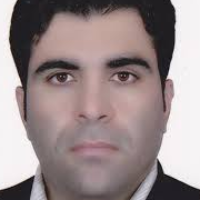The effect of land use changes on soil organic carbon and determination of the affecting soil factors on it in a bio-sequence (Case study: Jazink region of Sistan plain)
Soil organic carbon (SOC) is one of the most important components of soils that affects other characteristics of soil. SOC is also influenced by other soil characteristics. Studies showed that change in land use from pasture and forest to agriculture decreased SOC. However, this is not always true and it depends on various factors, especially the methods of organic matter management in the farm. This study was conducted with the aims of investigating the effect of changes in land use from forest and pasture to agriculture on the level of SOC and determining direct and indirect effects of soil characteristics on SOC in a bio-sequence of Sistan plain.
The studied bio-sequence was located in Jezink region, by the Hirmand river in the northeast of the Sistan plain and in the southwest of the border of Iran and Afghanistan. In November 2016, a total of 25 soil samples (5 soil samples from each vegetation) was collected by supervised randomized manner from the depth of 0-20 cm of each of places that had dense vegetation of Populus euphratica and Tamarix ramosissima (the forest covers), of Desmostachiya bipinnata and Suaeda vermiculata (the pasture covers), and the crop of Triticum aestivum ( with 15 years old land use change). Then, 28 physical, chemical and biological characteristics of the soil including percentage of SOC were measured and calculated. Statistical analysis of data in the form of completely randomized design, comparison of average SOC data with the least significant difference test, Pearson correlation between the measured soil characteristics, and stepwise regression analysis to identify significant effective factors on the changes SOC was performed by Statistix10 software. Then by path analysis the direct and indirect effects of those characteristics on the amount of SOC was calculated by Path 2 software.
Changes in the population of phosphate-solubilizing bacteria 37%, phosphate-solubilizing fungi 44%, total phosphate-solubilizing microorganisms 39%, bacteria 51%, fungi 46%, total microorganisms 51%; and also the changes in the amounts of organic carbon 39%, clay 68%, silt 71%, sand 81%, electrical conductivity (EC) 37%, sodium 56%, potassium 81%, nitrogen 67%, calcium 56% and magnesium 37% were affected by vegetation covers. The highest SOC was measured in vegetation cover of P. euphratica with a value of 1.24%. P. euphratica had organic carbon 2.21, 1.69, 1.94 and 1.86 times more than that of T. aestivum, D. bipinnata, S. vermiculata and T. ramosissima respectively. However, there was no significant difference in organic matter between vegetation covers of T. aestivum, T. ramosissima, D. bipinnata and S. vermiculata. SOC had the strongest positive (r=0.63) and negative (r=-0.60) significant (P≤0.01) correlation coefficients with the population of phosphate-solubilizing fungi and the sodium concentration of the soil solution, respectively. Also, based on the results of stepwise regression analysis and path analysis, the population of phosphate-solubilizing fungi and cation exchange capacity (CEC) were, respectively, the most effective positive influencing factors. The population ratio of phosphate-solubilizing microorganisms on the total microorganisms, as well as soil EC, were respectively the most effective factors negatively influencing the percentage of SOC in the study area.
In general, the most sensitive land use to changes is P. euphratica forest. Therefore, in order to improve soil quality and increase carbon storage in arid and semi-arid regions, in addition to maintaining and developing P. euphratica forest cover, it is suggested that the management and improvement of soil characteristics include: the population of phosphate-solubilizing fungi, CEC, The population ratio of phosphate-solubilizing microorganisms and EC should also be considered.
- حق عضویت دریافتی صرف حمایت از نشریات عضو و نگهداری، تکمیل و توسعه مگیران میشود.
- پرداخت حق اشتراک و دانلود مقالات اجازه بازنشر آن در سایر رسانههای چاپی و دیجیتال را به کاربر نمیدهد.




